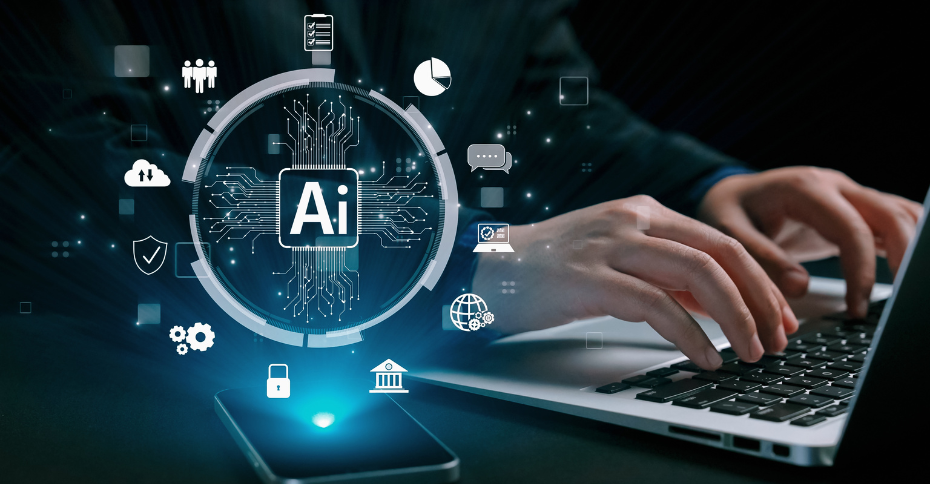Recruiting has always been a vital but challenging factor in building effective organizations. Conventional recruitment typically involves sifting through hundreds of resumes and several rounds of interviews, along with a number of tedious administrative activities. These outdated protocols are simply time-consuming and are subject to human error, inefficiencies, and biases denying you from being able to find the best candidates. That is where Artificial Intelligence comes in; an impressive tool that is transforming the recruitment process of organizations.
AI-enabled recruitment solutions are designed to take redundant work out of your processes, plow through massive amounts of data, and report relevant insights that actually inform and improve decision-making. From resume screening streamlining to increasing candidate engagement, AI methods assist human resource professionals in thinking strategically about how to process, instead of just thinking an improvement process about the processes alone.
With the use of AI technologies, companies can benefit from quicker hiring cycles, better matches, and more diverse candidates. In addition, AI makes sure that every experience in your hiring process, starting at sourcing and finishing with onboarding, is designed to be as efficient as feasible, with accuracy. As more businesses continue to utilize technology, it is evident that AI is not only an advantage, but actually a necessity for organizations who want to attract, recruit, and retain top talent in today’s competitive workforce.
Automating Candidate Sourcing and Screening
One of the largest obstacles in recruitment is picking appropriate candidates from a large volume of applicants. Traditional candidate sourcing techniques often require human sourcing and decision making which can be inefficient and full of opportunity for inconsistencies and mistakes. Here is where AI-predictive tools bring transformational benefits to the hiring process.
One of the largest obstacles in recruitment is picking the appropriate candidate from a large volume of applicants. Traditional candidate sourcing techniques often require human sourcing and decision making which can be inefficient and full of opportunity for inconsistencies and mistakes. Here is where AI-predictive tools bring transformational benefits to the hiring process.
AI- predictive tools remove the human aspects just above to a degree, and rather resume sourcing becomes simply a matter of comparing the applicant against a very large and diverse destination professional pool profiles and resume to find the most appropriate candidate for the role. Using machine learning algorithms, these tools evaluate candidates’ qualifications, skills and experience, which have the additional benefit of dramatically reducing the time needed to find the very best talent.
When possible candidates have been obtained, AI will continue to aid the process by innovating resume and screening with an automatic process. Leveraging natural language processing (NLP) and machine learning, AI can extract pertinent information from candidates’ resumes (education, work experience, technical skills) and rank candidates in terms of their fit for jobs. This automation yields a two-fold benefit where not only is the front end of the process expedited, but hiring managers can focus their efforts on the most relevant candidates thereafter creating more efficient cycles and more informed decisions. Through the implementation of a candidate sourcing application and screening, organizations can create stronger teams much quicker while significantly raising the bar on candidate talent quality.
Leveraging Predictive Analytics for Better Hiring Decisions
Predictive analytics is changing how organizations approach hiring decisions, converting the information into actionable intelligence. Many approaches to hiring have involved subjective assessments as a key factor, predictive analytics projects the future behavior of candidates through historic data and consulting algorithms and machine learning to better determine a candidate’s suitability for a position as well as the candidate’s future performance in an organization.
Predictive analytics looks for patterns in history through resumes, interviews, and other assessments when identifying candidates that have a better chance to perform well. For instance, predictive analytics can identify key characteristics among high performers and then identify candidates that may have similar characteristics. This also offers a chance for better alignment between the candidates. This also offers a chance for better alignment between the candidates’ skills and organizational goals.
Another benefit is that it can help minimize unconscious biases by using objective data to validate the need for talent instead of relying on subjective opinions. Predictive analytics also assist in workforce planning by bringing to light certain trends, which can help an organization prepare for talent needs in the future. With predictive analytics, organizations can make intelligent, data-driven, hiring decisions that can ultimately lead to organizational success.
AI for Post-Hiring and Workforce Planning
AI hung post hiring in recruitment. It extends its reach to post-hiring processes and strategic workforce planning. Therefore, organizations and employees’ fututres depend on effective outcomes. AI tools also simplify the process of onboarding new hires. By automating document verification, orientation scheduling, and compliance training, AI starts new hires out perfectly within the organization.
When we use analytical AI tools that apply to manpower, such as those that tell us when the employees perform well or how they engage and retain workers-they become very useful. This application will help figure out skill gaps while also predicting turnover risks and suggesting training programs to fill these gaps for the further development of employees.
However, AI plays a major role in work planning, particularly forecasting future talent. Using bi data and market trends, organizations can identify skills shortages or plans for growth and, hence, prepare accordingly. Thus, with the help of AI, post hiring, and work planning experience, organizations will create better-formed, modern, and adaptable teams while making an employee-friendly environment.
